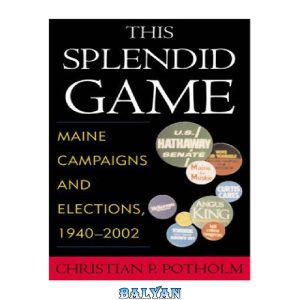ترجمه فارسی توضیحات (ترجمه ماشینی)
دیوار برلین و مرزهای درون آلمانی، 1961-1989
دیوار برلین و مرز داخلی آلمان (IGB) برای توقف جریان پناهجویان از آلمان شرقی به غرب ساخته شد. از 13 آگوست 1961، بیش از 96 مایل حصارهای خام و دیوارهای پیچیده تر در اطراف برلین غربی ساخته شد. پدافند مرزی 858 مایل از بالتیک تا مرز چکسلواکی را طی می کرد، روستاها را به دو نیم می کرد، از ساختمان ها عبور می کرد و جاده ها و راه آهن را متقاطع می کرد. گوردون ال روتمن که در زمان اعزام به آلمان با هر دو طرف مرز آشنا شد، به بررسی موقعیت های بین المللی که منجر به ایجاد دیوار برلین شد، نحوه عملکرد سیستم های حائل و اهمیت آنها در جنگ سرد را مورد بحث قرار می دهد. این کتاب با پوشش موانع، نحوه تکامل آنها، ابزارهای دفاعی و نقش ایست های بازرسی، چگونگی تلاش مردم عادی برای غلبه بر این موانع فیزیکی و سیاسی را در تلاش برای آزادی شرح می دهد. گوردون روتمن می نویسد: “در سال 1980 خود را در یک شرکت گشت شناسایی دوربرد (LRRP) دیدم. پس از 2 سال آموزش به عنوان شرکت V Corps LRRP منصوب شدیم: ماموریت ما در صورت تهاجم شوروی به آلمان غربی بود. برای وارد کردن 21 تیم شناسایی 5 نفره خود در داخل آلمان شرقی، ایجاد “پنهان” مشرف به اتوبان ها و دیگر بزرگراه ها، و گزارش تحرکات دومین رده عملیاتی، نیروهای متعاقب در پشت نیروهای حمله اولیه. ما یک مطالعه شدید در مورد IGB شروع کردیم و در این فرآیند توانستم از مرز بازدید کنم، راه های آن را یاد بگیرم و نحوه نفوذ به آن را بیاموزم.”
The Berlin Wall and the Inner-German Border (IGB) were built to halt the flow of refugees from East Germany to the West. From August 13, 1961, over 96 miles of crude fences and more sophisticated walls were erected around West Berlin. Border defenses ran 858 miles from the Baltic to the Czechoslovakian border, cutting villages in two, running through buildings, and intersecting roads and railways. Gordon L Rottman, who became familiar with both sides of the border while posted to Germany, examines the international situations that led to the creation of the Berlin Wall, discussing how the barrier systems functioned and their significance in the Cold War. Covering the erection of the barriers, how they evolved, defensive devices and the role of the checkpoints, this book also describes how ordinary people attempted to overcome these physical and political obstacles in their quest for freedom. Gordon Rottman writes,”In 1980 I found myself in a long-range reconnaissance patrol (LRRP) company. After 2 years of training we were assigned as the V Corps LRRP company: our mission in the event of a Soviet invasion of West Germany was to insert our 21 five-man reconnaissance teams inside East Germany, establish “hides” overlooking autobahns and other highways, and report the movements of the second operational echelon, the follow-on forces behind the initial assault forces. This required us to know a great deal about what it was like inside East Germany. We began an intense study of the IGB, and in the process I was able to visit the border, learn its ways, and find out how to penetrate it.”












نقد و بررسیها
هنوز بررسیای ثبت نشده است.